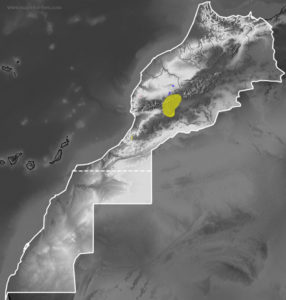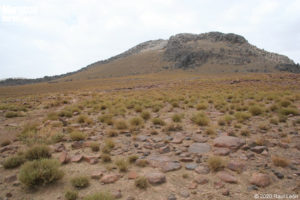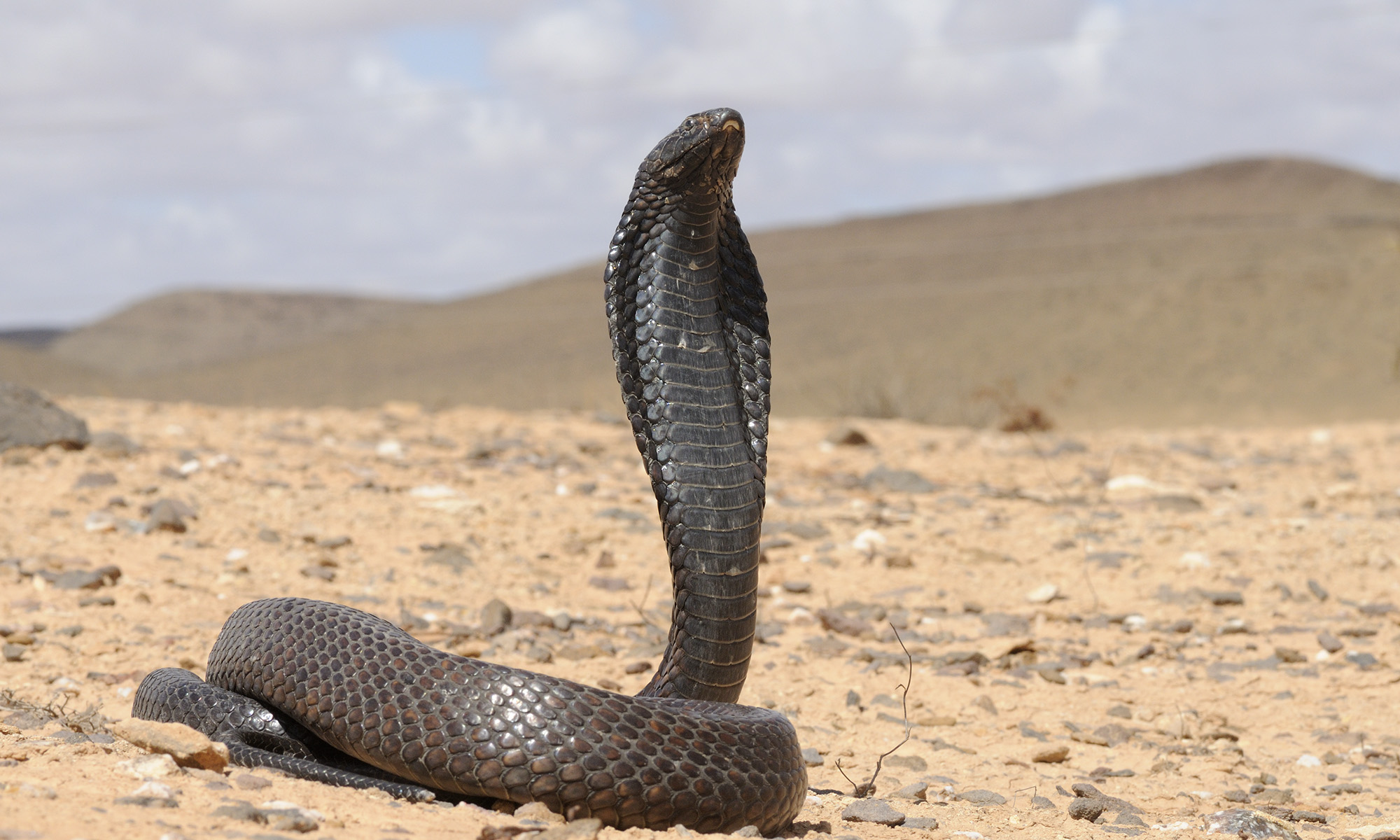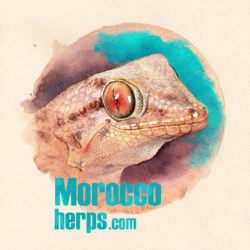Jebel Sirwa Spiny-footed lizard
Acanthodactylus montanus Miralles, Geniez, Beddek, Mendez-Aranda, Brito, Leblois & Crochet 2020
By Gabriel Martínez del Mármol Marín
Updated: 22/03/2020
Taxonomy: Sauria | Lacertidae | Acanthodactylus | Acanthodactylus montanus


 A. montanus (estimated distribution)
A. montanus (estimated distribution)
Distribution map of
Acanthodactylus montanus
in Morocco.
Photo gallery: 0 photographies.
Phylogenetic frame
Morphologically, taxonomic discussions within red-tailed lizards (Acanthodactylus erythrurus s.l.) in Morocco have always been focused on populations north of the High Atlas. However, the realization of genetic analyses revealed the enormous isolation that existed in the individuals of Jebel Sirwa with those of the rest of Morocco, being genetically more similar to the Algerian populations and to A. blanci than to those in the north of the Moroccan High Atlas (Fonseca et al., 2009).
Recent studies have elevated this Jebel Sirwa population to the rank of species: Acanthodactylus montanus, which also seems to occupy in Tizi n’Tichka and probably the western parts of the High Atlas (Miralles et al., 2020).
Description
Lizard of medium size, reaching a maximum size of 227 mm. It has a relatively large head with a rounded snout. The authors that described the species (Miralles et al., 2020) propose the following description:
- head scalation usually of the “bellii” type (subocular in large contact with the upper lip, wedged between the 4th and 5th supralabials), one internasal plate, no scales inserted between the prefrontals, but sample has no contact between the left supralabial and the lip;
- a low number of dorsal scales (47–59 longitudinal rows around the body, mean 54.0), femoral pores (17–23, mean 19.9) on each side and subdigital lamellae (19–22, mean 19.9) on the 4th toe;
- one or one and a half row of supraciliary granules on each side with a very reduced number (15–46, mean 25.7) of scales and granules around the 2nd and 3rd supraoculars on each side;
- temporals smooth or slightly keeled;
- dorsal scales smooth or slightly keeled on the neck and progressively turning to distinctly tectiform or sometimes keeled on the back;
- stocky proportions, especially in adults, with a relatively short tail (57.9–65.9% of the total length, mean 60.8%, almost always longer for all the other Acanthodactylus of the erythrurus group except lacrymae);
- base of the tail of adult males very thick;
- in juveniles, underparts of the tail orange red to intense coral red, slightly paler under the base of the tail, even paler under the rear of the thighs, this colour usually not reaching the rows of femoral pores;
- some marginal ventral plates yellow of yellowish in adult and subadult males and females, sometimes in juveniles;
- a series of small round ocelli on the flanks (each one containing 4–9 brightly coloured scales), usually yellow greenish in adults, which tend to disappear completely in adult females.
The body has a robust appearance, with a coloration similar to the other members of the Acanthodactylus erythrurus group.
Adults with dark brown coloration with lighter lines – beige – on the back and upper flanks and a better marked line on the lower flanks; There are irregular earthy brown markings on the back above the dark lines.
Juveniles with a very dark background color on which there are three continuous light lines (beige) on each side of the body.
They differ from the rest of the groups of lizards of the genus Acanthodactylus in that they present three complete series of scales along the fingers, because they have small scales on the back and because the lower part of the tail is bright red in juveniles and subadults. (Bons and Geniez, 1996). For morphological differences with A. erythrurus and A. lacrymae, it is convenient to look at the distributions and in case of possible contact area, try to get a sample for genetic analysis after the correspondent permission.

Ecology and habits
Like other lizards of the erythrurus group, it is an eminently terrestrial species that moves very quickly in earthy and sandy areas and among thick bushes.
Being a mountain species, it possibly has a period of winter dormancy or a decrease in activity that can go from November to February. Although possibly even during this period, observations of individuals sunbathing on warm days can occur. It can be seen active even during the months of July and August.
For reproduction, feeding and predator data, see the Acanthodactylus erythrurus file, as there are no data available on this species.
Distribution, habitat and abundance
It is a Moroccan endemism, and currently only the populations of Jebel Sirwa (2,320 m) and Tizi N Tichka (2,176 m) have been genetically confirmed, although it is very possible that the populations of the erythrurus group between Taroudant and Tazenahkt and other montane areas of the Western High Atlas belong to this species, with a higher range between 1,800m-2,500m presumably (Miralles et al., 2020).
It occupies only mountain areas with a habitat made up of plains or earthy slopes with scattered stones and above all dense bushes that serve to hide and rest while waiting for prey during the hottest hours of the day when they do not want to receive direct sunlight.

Little is still known about this newly described species, which is why, according to IUCN criteria, A. montanus is in a “Data Deficient” state of conservation (DD: Miralles et al., 2020), although possibly given the abundance of these lizards in the areas where it has been located, may soon be included in the category of “Least Concern” (LC).
Bibliography
- Fonseca M.M.; Brito J.C.; Paulo, O.S.; Carretero, M.A. & Harris, D.J. 2009. Systematic and phylogeographical assessment of the Acanthodactylus erythrurus group (Reptilia: Lacertidae) based on phylogenetic analyses of mitochondrial and nuclear DNA. Mol Phylo Evol 51:131–142.
- Miralles, A. & Geniez, P. & Beddek, M. & Mendez-Aranda, D. & Brito, J.C. & Leblois, R. & Crochet, P.-A. 2020. Morphology and multilocus phylogeny of the Spiny-footed Lizard (Acanthodactylus erythrurus) complex reveal two new mountain species from the Moroccan Atlas – Zootaxa 4747 (2): 302–326.

